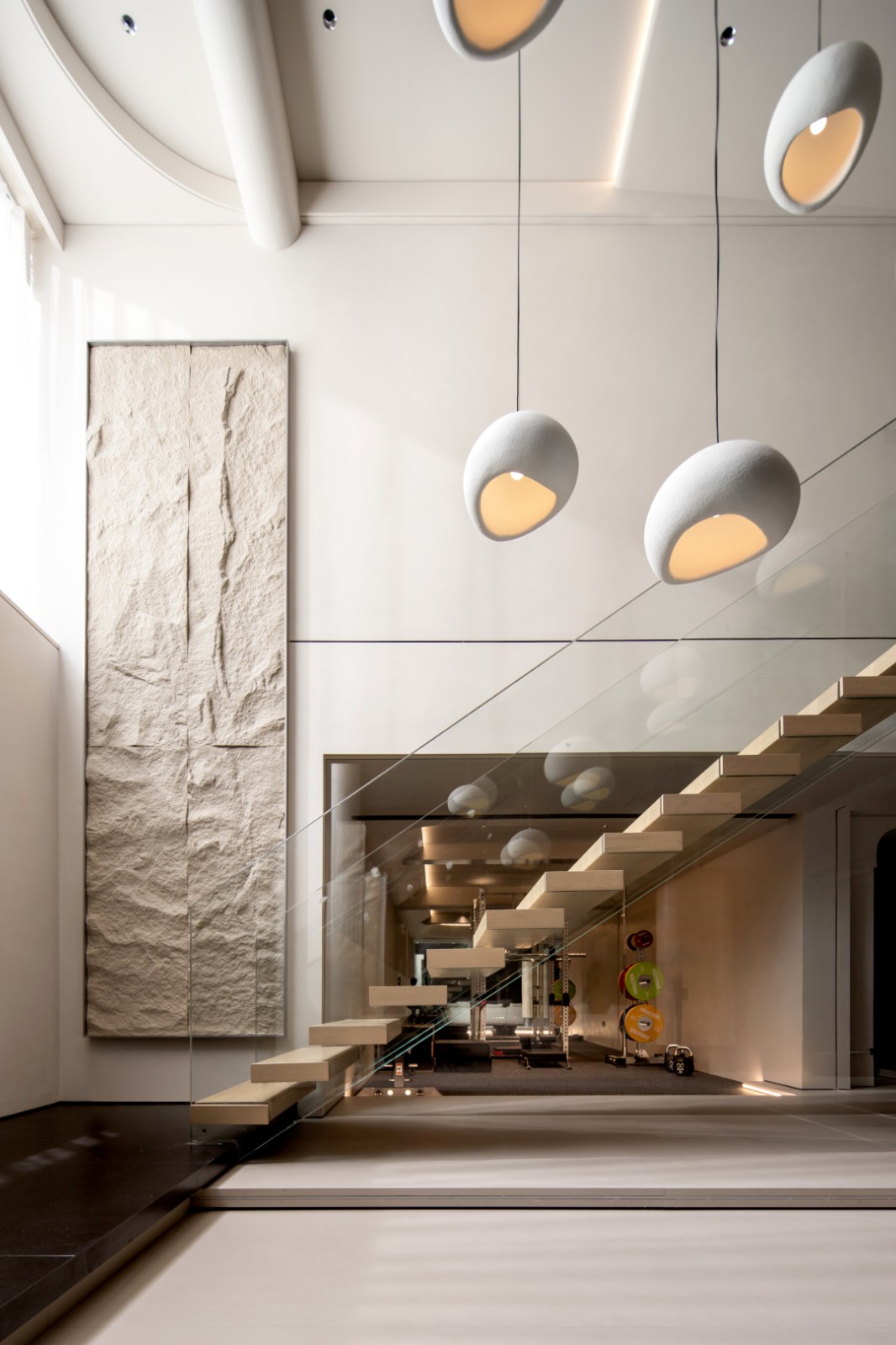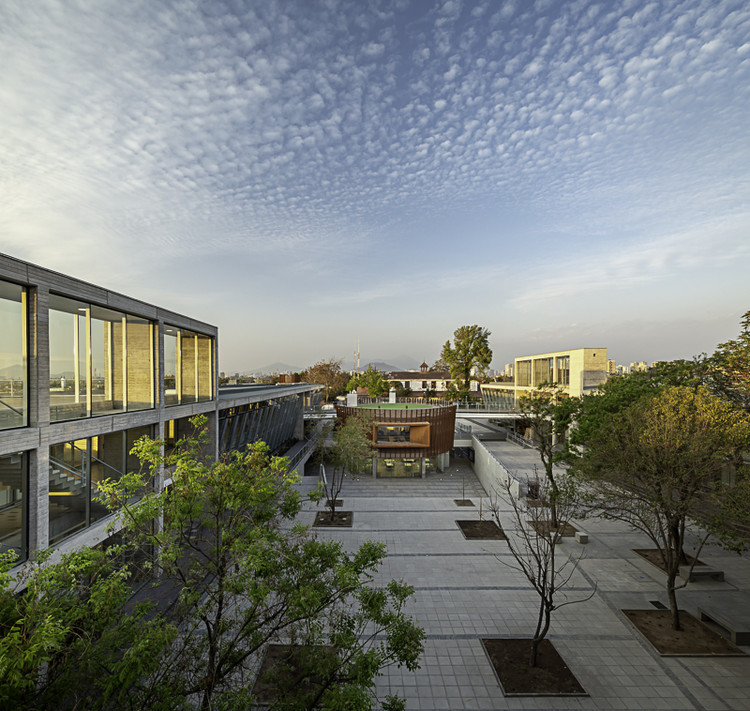Henkel Asia
2013-05-23 01:00
Text description provided by the architects. Henkel AG& Co. KGaA’sheadquartersfor Asia-Pacific & Chinawas completed in summer 2007. The building is located in Pudong, Shanghai’s booming economic center on the east bank of the Huangpu River. The new administration and research center stands in a new industrial zone. It’s basic form represents an asymmetrical curving U.
建筑的设计是基于“皮肤”和“地幔”的概念,以及自然与建筑的结合。环境兼容性和可持续性是关键的指导原则。中国传统文化也融入了设计过程。玉兰作为上海的城市之花,成为各种设计决策的灵感源泉。此外,还为这一项目聘请了一名风水顾问。在总部的整个布局中,分析和实施了中国传统建筑的定位和配置。朝南,U形在中心形成一个焦点。它变成了一个绿色的庭院,供周围的办公室和实验室使用。在风水中,焦点的概念是特别重要的,因为它是保存一个地方的精髓的地方。双层玻璃窗表面涂有浅绿色和白色的彩色薄膜。这种颜色是从木兰花中得到灵感的。同样的概念不断出现在庭院,中庭大厅和员工食堂。
Design for the building was based on the concepts of “skin” and “mantle” and integration of nature with architecture. Environmental compatibility and sustainability were the key guiding principles. Traditional Chinese culture was also integrated into the design process. The magnolia, as the city flower of Shanghai, became the inspiration for various design decisions. In addition, a fengshui consultant was hired for this project. Application of traditional Chinese building orientations and configurations was analysed and implemented throughout the headquarters’ layout. Facing south, the U shape creates a focal point in the center. It becomes a green courtyard for offices and labs around. Idea of a focal point is particularly important in fengshui, as it is where the essence of a place is kept. Double glazing on the façade is coated with colored film in shades of light green and white. The colour draws inspiration from the blossoms of the magnolia. The same concept continuously appears through the courtyard, atrium lobby and staff canteen.
新大楼有五层楼和一个地下室,总楼面面积为23,000平方米,大约有500个工作站。5.5米高的网格和2.75米的外墙网格为办公和实验室布局提供了最大的灵活性。这座建筑是用钢和一个抗震混凝土框架建造的.该设计采用了传统的当地建筑材料,包括竹子,花岗岩和砂砾嵌入砂浆。
With five stories and a basement, the new building has a GFA of 23,000 square metres and approximately 500 work stations. The 5.5 metreconstruction grid and 2.75 metre façade grid providesthe greatest flexibility for office and laboratory layouts. The building is constructed with steel and an earthquake–proof concrete framework. The design uses traditional local building materials, including bamboo, granite and gravel embedded in mortar.
大楼的正门位于北五层中庭的中间。它还将两端的两个圆形连接起来。这栋楼在东边
The main entrance of the building is located in the middle of the five-story atrium at the north. It also connects the two rotundas at each end. The building’s east & west wings can be access through the two rotundas. The east side rotunda and east wing serves as ultramodern laboratory areas, with a showroom on the ground floor; while the west side is used as office spaces which consist of a mixture of open areas, cubicles, and team offices. The three upper levels are also connected by sky walkways at the rear of the building, providing access between laboratory and office. On the south side, a separate two-story structure consists of staff training and seminar rooms, a lecture hall, and staff canteen providing supporting facilities for the headquarter.
立面是作为一个连续的,全玻璃幕墙与一个基本的建筑系统,以满足西方标准建设节能建筑。采用隔热玻璃和热解耦窗框,获得了1.86W/mK的透射值.外墙防晒在中国建筑中也是不寻常的。因此,与地区平均水平相比,该建筑的能耗降低了40%。
The façade was built as a continuous, all-glass curtain wall with an elemental construction system in order to meet the western standards on construction of an energy-efficient building. By using heat-insulating glass and thermally decoupled window frames, transmission value of 1.86 W/m-K was achieved. Exterior sun protection, which is unusual in Chinese construction, was also applied. Energy consumption of the building thus was lowered by a total of forty percent in comparison with the regional average.
 举报
举报
别默默的看了,快登录帮我评论一下吧!:)
注册
登录
更多评论
相关文章
-

描边风设计中,最容易犯的8种问题分析
2018年走过了四分之一,LOGO设计趋势也清晰了LOGO设计
-

描边风设计中,最容易犯的8种问题分析
2018年走过了四分之一,LOGO设计趋势也清晰了LOGO设计
-

描边风设计中,最容易犯的8种问题分析
2018年走过了四分之一,LOGO设计趋势也清晰了LOGO设计






































.jpg)




























